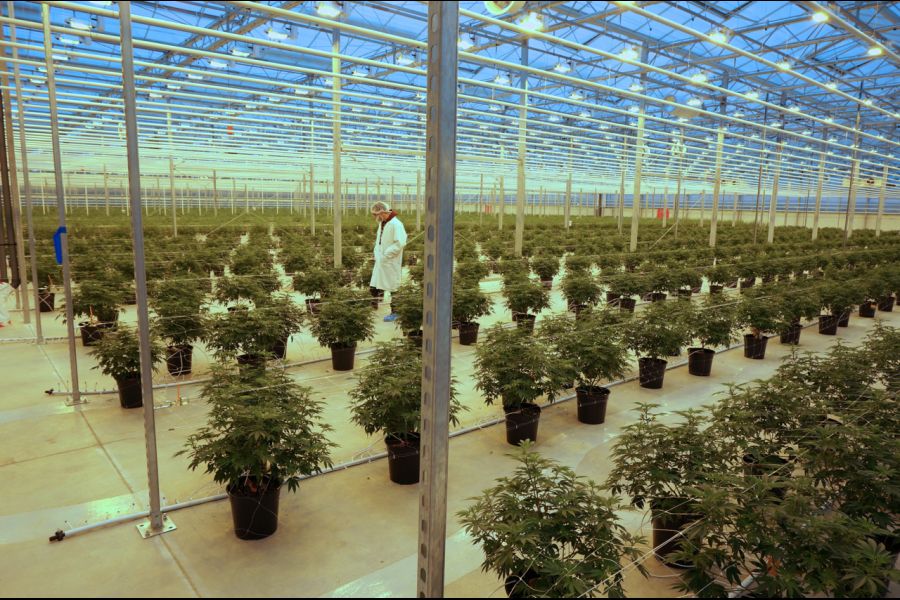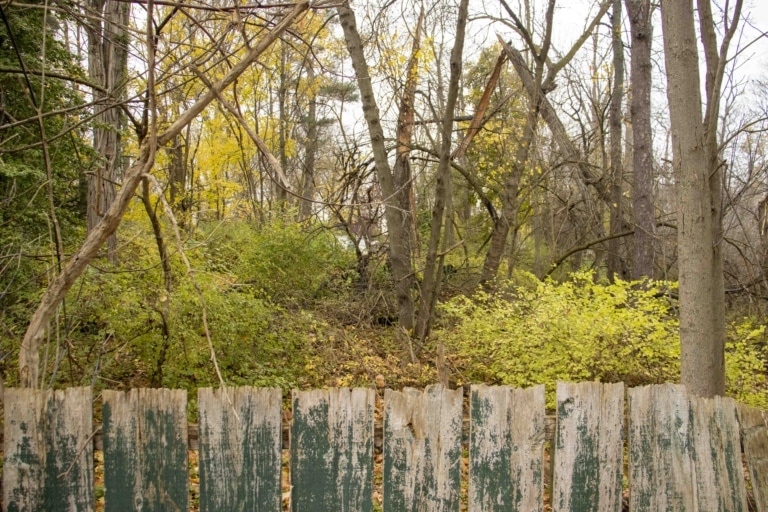From the street view on Concession 5, the operation at Tweed Farms in Niagara-on-the-Lake is unassuming, set in an agricultural area, surrounded by security fences, a gravel road leading to a security gate, greenhouses in the distance, and construction trailers and parking lots scattered across the grounds. Yet the operation is part of a dramatically expanding industry, producing a high volume of medical marijuana, using modern and sophisticated technology, and all of it under strict Health Canagda regulations and standards.
Jessica Gagne is the cultivation manager at Tweed Farms, and her passion for the work of nurturing the cannabis plants is evident. “It’s all about the plants here … plants are wise, they are capable of growing. We just have to give them the right conditions.” Gagne, just 24 years old, has earned a rapid rise in her career since starting at Tweed in 2015 in an entry level job. She said the business has grown so quickly, “it’s provided good opportunities to people who are committed to learning and working hard.” She progressed from production assistant, to lead hand, to section grower, and most recently to her current role of cultivation manager, all in three short years.
Now she is responsible for the plants and the people, both of which are increasing in number. People now number 200, and will grow to 240, and plants number in the tens of thousands. Another case in point of quick career growth is Nick Biamonte, who started at Tweed a few months after Gagne.
Biamonte grew up in NOTL and graduated from Niagara College. After working at Tweed in NOTL, Biamonte is now the cultivation manager at the new Tweed greenhouses in B.C.
The work day starts early at Tweed Farms, 6:30 or 7:30 a.m., according to Gagne. Teams assemble and review the priorities for the day, before heading to the large rooms where the marijuana plants grow in each greenhouse. Each person entering the greenhouse room must first wash their hands, don a white lab coat or blue coveralls, hairnet, booties, and gloves. Security cards are worn at all times, and everyone has to swipe in and out of each doorway entered or exited. The environment is more like a pharmaceutical laboratory than a farm, spotless, clutter free, and perfectly ordered. Hallways are high-ceilinged and spare, cannabis plants are precisely spaced and symmetrically lined up. There is nothing superfluous in the growing rooms, nothing but the essentials for caring for the plants is in the rooms.
Routine tasks include trimming the plants, scouting for pests or diseases, and monitoring water needs. The plants follow a cycle of growth, explained Gagne. She said it takes seven to ten days to root, three weeks in a propagation tray, then they get transplanted to a pot and go to a greenhouse room. Once in the greenhouse room, there’s a four week vegetation stage, followed by seven to nine weeks flowering. Light is automatically adjusted according to relative daylight. Plants get 18 hours of light and 6 hours of dark during the vegetation stage, and 12 hours each of light and dark during flowering. The plants need dark to “sleep”, so the design of the light levels tries to mimic their own natural pattern. Once flowering is complete, there is a full bud produced on the plant, and it’s the bud that is harvested, as it contains the active ingredients of medical marijuana. Working in the greenhouses is most difficult in the summer months, as the temperatures inside are consistently 10 degrees hotter than the outdoor temperature, without the humidex. When it’s excessively hot, there are protocols for heat breaks, for each half working inside the greenhouse, there’s a break of half an hour, plus provision of water and frozen treats.
Once harvested, the buds go to a trim room to reduce the leaves and stems, then they are dried on large perforated trays for approximately a week. At that point the dried buds are packaged into heavy plastic bags and shipped to Tweed headquarters in Smith Falls for final production into capsules, extraction, or bottling. The rest of the plants are finely shredded and composted, according to specific Canada Health regulations.
Gagne reflected on her time working at Tweed, saying, “When I started, we were one of the few places growing marijuana, and even my own family was concerned it would be sketchy to work here. Over time though, attitudes have become more positive, people are more interested and open to hearing about what we do here.“ She added, “We’re really proud to produce medical marijuana and we want to produce the very best product we can.”










